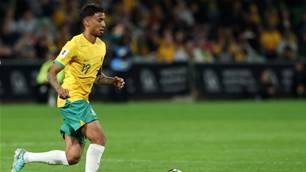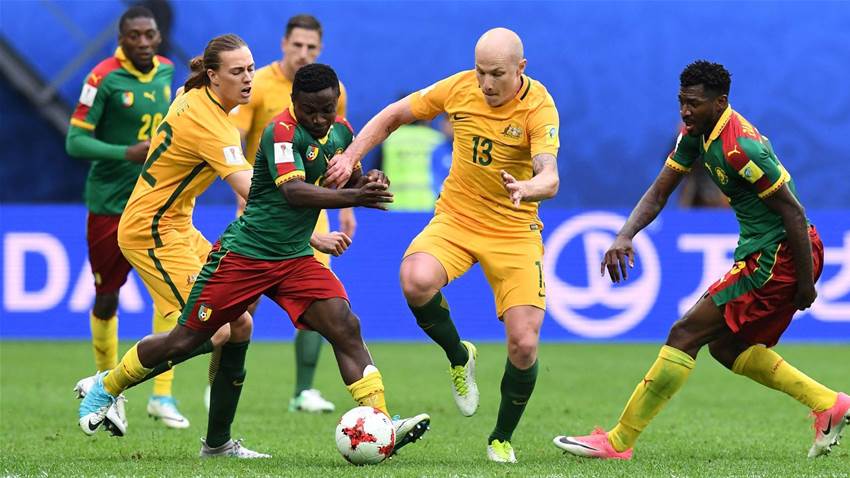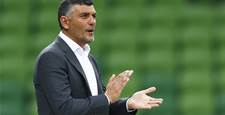In what was billed as a must-win game for both teams, Cameroon had the bulk of the chances over the course of an exciting game.
It was another improvement for the Socceroos, with an interesting tactical battle between Ange Postecoglou and Hugo Broos occurring throughout. A full-time score of 1-1 didn’t particularly suit either team, with positive results required against Chile and Germany respectively if either are to have any hope of progressing to the Semi-Finals.
Formations
Ange Postecoglou made two changes to the starting XI that began the match against Germany, with Robbie Kruse getting the nod ahead of Massimo Luongo, who performed poorly in the 3-2 loss against Die Mannschaft. Aaron Mooy returned to a deeper midfield role alongside Mark Milligan, in an effort to control possession in the same manner that was prevalent in the improved second half against Germany. Alex Gersbach, 20, who was a late injury replacement to Brad Smith, replaced Aziz Behich on the left wing, and Tomi Juric continued to lead the team going forward.
Former Club Brugge manager Hugo Broos named an unchanged team from Cameroon’s 2-0 defeat against world number four Chile, with the most capped player in the 11 being Vincent Aboubakar, who has appeared 59 times for his country at the age of just 25. France-based captain Benjamin Moukandjo started on the left-hand side of attack, with Collins Fai behind him at left-back. The highly technical Zambo Anguissa began the game at the base of midfield behind Siani and Djoum, but would take up a more advanced role as the match went on.
 Formations and movement tendencies
Formations and movement tendencies
Australia’s exploitation of the fifth line
The bulk of Australia’s most promising moments initiated in and around their fifth line of play, with Tommy Rogic and Robbie Kruse performing key roles during chance creation phases.
For the opening periods of the game, there was essentially a consistent 2v1 situation on the fifth line, as Rogic and Kruse were playing against the single pivot of Anguissa. On its own, this scenario presented Anguissa with three separate defensive decisions; to mark Rogic, to mark Kruse, or to mark the space in front of the back four.
Each decision obviously has a cost, that being the other two options are now free. For example, if the defender goes to Rogic, then Robbie Kruse is unmarked on the opposite side and the central channel is unmanned, thus creating space for Juric to drop into or a deeper midfield to advance. This dilemma caused Cameroon numerous headaches in the first half, as Australia looked to exploit the 2v1 situation as often as possible.
 2v1 situation on the fifth line, favouring Australia
2v1 situation on the fifth line, favouring Australia
Rogic and Kruse played complementary yet different roles, further increasing the variability of Australia’s attack. The creative Tom Rogic was often seen to receive the ball side-on in an attempt to play the ball forward as quickly as possible. This led to the creation of several good chances, with Alex Gersbach being the beneficiary more often than not.
Highlighted above is the general area in which he would receive the ball, particularly when Anguissa was performing another defensive duty – it is from this position that he would act as the base of incursions into the opposition penalty area, with his impressive technical ability allowing him to break the defensive line on a consistent basis.
This breaking of the line was especially clear when Rogic was able to drive at the defence. As has been explored in previous articles, an intelligent dribbler can cause heavy systematic damage to the shape of the opposition defensive line, distorting their positions in a way which makes goal-scoring chances easier to generate.
 Robbie Kruse was able to combine with Leckie to overload Fai
Robbie Kruse was able to combine with Leckie to overload Fai
Postecoglou’s apparent preference towards Robbie Kruse has been questioned by many parties, in many cases rightly so, but one thing that he does bring to the team dynamic is his forward movement.
Running beyond his man regularly, Kruse influenced the entirety of the Cameroonian to not push as high up the pitch as they might have in order to defend the space behind them. On its own merits, this may not seem like a big deal – however, as Cameroon’s front three were often pressing, this forced an increase in space between the defensive and midfield lines of the African champions, creating more room for Tommy Rogic to get himself on the ball.
Kruse was able to apply the Socceroos’ right-sided rotation reliably, combining with Mat Leckie to drag Collins Fai out of position and exploit the space in behind. Further to his forward runs, Kruse was able to overload the right-side of the pitch with Leckie, adding to the ability of the Australians to penetrate Cameroon’s back four, as shown above by the shaded area.
Broos’ response
In the later stages of the first half, Hugo Broos pushed Anguissa to the point of the midfield triangle and played with a double-pivot, in an attempt to equalise the situation on Australia’s fifth line.
Every tactical decision has an off-set cost, and in this case, Mooy and Milligan were afforded more time and space in deeper positions which were not deemed as dangerous by the Cameroon boss.
Of further benefit to the Indominatable Lions was the opportunity for the pacey Anguissa to play further up the pitch, which culminated in the opening goal just before half-time. From a defensive standpoint, the midfielder acted as a floater, pressing Milligan or Mooy when required.
The double-pivot consisted of Siani and Djoum, with the former ensuring Rogic would no longer be able to enjoy the same amount of space and time, and the latter assisting in the equalisation of the overload on the left-hand side of defence. The presence of Djoum also blunted the effectiveness of the forward movement of Robbie Kruse, as the extra man allowed the run to be tracked and covered, giving the back four the required confidence to press higher up the pitch than before.
Overall, the change in shape was very successful – the previously marauding Rogic was kept largely under control for the rest of the match, and it wasn’t until midway through the second half when Kruse came on and Rogic switched sides that he had the space to receive the ball facing forward again. However, shortly after that change from Postecoglou, Broos recognised this and Djoum was instructed to nullify the situation, subsequently resulting in the substitution of Rogic in the 79th minute.
Cameroon’s counter-attacking strategy
With the pace on offer from Aboubakar and co., it was clear that Broos set his side up to defend and counter as quickly as possible. On multiple occasions, Juric failed to press either centre-back promptly, allowing them the time to play a long ball forward. However, these passes were not simply the kick and chase kind, but was the concluding element of a specific rotation which allowed a full-back, or a player starting from a similar angle on the inside of the field, to overlap and exploit the space behind the Australian back three.
On the left as below, this rotation commenced by Ngadeu-Ngadjui receiving the ball, which was followed by left-winger Benjamin Moukandjo dropping from his higher position while facing the ball carrier. On occasion, this movement drew Milos Degenek away from his position, availing further space in that area. This motion triggered the overlapping run of Collins Fai, who vacated his wider position in favour of moving into the left half-space to receive the aerial ball from Ngadeu. From there, Fai would either drive at goal himself or attempt to look for the central runs of Aboubakar and Bassagog.
There are two common ways of preventing effective counter attacks; to drop the defensive line closer to goal, thereby limiting the conceded space, or to stop the pass at source. The Postecoglou mentality of ‘never take a backwards step’ ensures that Australia will almost certainly always look to stop the ball at source.
 Cameroon’s rotation to enable a counter-attack
Cameroon’s rotation to enable a counter-attack
Just before half-time, the approach of the Indominatable Lions paid dividends, with Anguissa breaking through the Australian defence to score past Mat Ryan. The goal came about as a result of a defence-splitting long ball from centre-back Teiku, who was not shut down in time by the approaching Juric. Had Australia’s back three held their line, it is possible that the goal would not have been conceded.
Anguissa and Aboubakar began their runs almost as soon as Teiku drove forward with the ball, disturbing the Australian back three. Instead of holding their line, Degenek in particular dropped deeper than his fellow centre-backs in order to compensate for the difference in pace. As a result, this effectively broke the defensive line, allowing the Cameroonian forwards to be closer to goal than their defenders, as shown below. The shifting of the offside line, brought on by the covering run of Degenek, gave Anguissa the head start on Sainsbury and Wright that resulted in the goal.
 Aboubakar and Anguissa were allowed behind Sainsbury and Wright
Aboubakar and Anguissa were allowed behind Sainsbury and Wright
Conclusion
A tense and intriguing tactical battle between incumbents Postecoglou and Broos resulted in what can only be described as an unsatisfactory result for either team. Needing points on the board, both teams knew that a loss would send them home, but a solitary point means that a win in their next game is a necessary condition if they are to have any chance of progressing in the competition. Chile and Germany will be pleased however, as they know that a draw against their next opponents will be enough to seal qualification.
Related Articles

Socceroos midfielder embraces move to England

Cardiff City snap up sought-after Socceroos starlet














